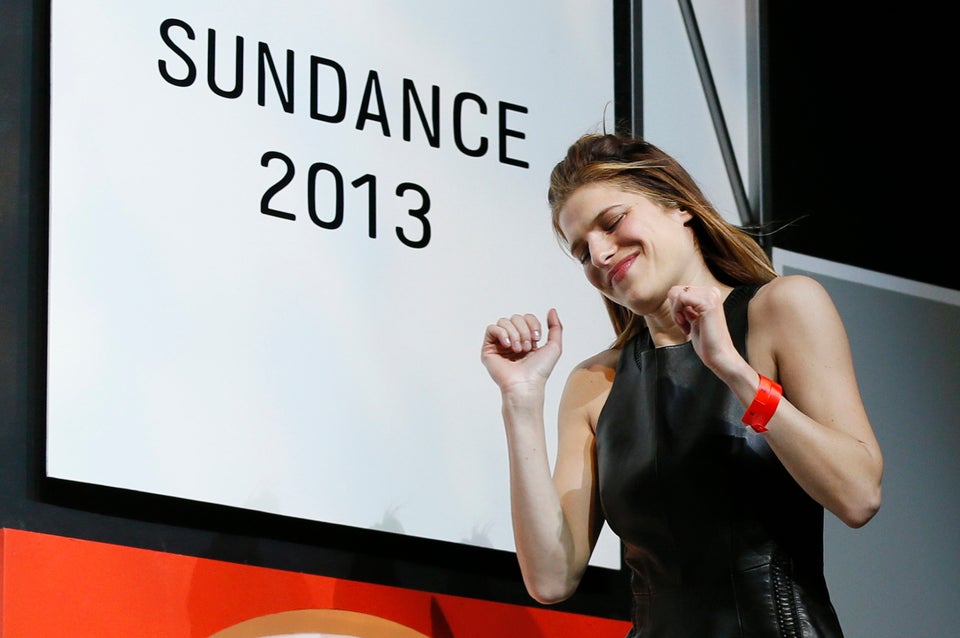
Dude, let's get high! This is the sentiment that appears to be at the crux of many films at the 2013 Sundance Film Festival, and while the presence of drugs in indie film (or all film, for that matter) is nothing new, it certainly is popping up as a palpable trend at this year's festival.
But it's not just the general doing of drugs, talking about drugs, drugs-are-good-drugs-are-bad conversation that's weaving its way through Park City. Instead, we are seeing filmmakers explore drugs as a path to salvation or as a way for their characters to reconnect to the world. In multiple buzzed-about films, characters experience a deeply spiritual relationship with drugs that propels each of them into a happier, more enlightened or self-aware state. In these films, it's the drug that really pushes the characters to the other side.
CRYSTAL FAIRY
Michael Cera stars in Crystal Fairy, a poignant and hilarious travel film set in Chile, written and directed by the talented Sebastian Silva (The Maid). It's a mescaline-infused Odyssey tale, one that's part Fear And Loathing In Las Vegas and part something much more innocent. Cera, an American traveler, goes on an road trip voyage with three Chilean friends to a beach in the north to take a hallucinogen called the San Pedro cactus. The night before leaving, Cera meets a highly-spiritual and quizzically whimsical girl at a party named Crystal Fairy (played by Gaby Hoffman). Spontaneously, she joins them on their trip the next day, but her free-spirited ways agitate Cera to the point of almost breaking him. His desperation becomes manic as his only mission is to acquire the San Pedro cactus, cook it and ingest it with the group on the beach. The five eventually take the drug (one brother secretly opts out) and they each experience different levels of joy and discovery while on the hallucinogen. Yet, emotions run deeper in these scenes as conflict between Cera's character and Crystal Fairy causes her to separate from the group. When they finally reunite hours later at the end of the film, each slowly coming down from their drug, Crystal Fairy divulges upsetting trauma from her past that both humanizes her and elicits compassion from the group of boys. Their drug experience opens a door in each of them and they leave the beach as different and more developed characters.
KILL YOUR DARLINGS
Daniel Radcliffe (a.k.a. Harry Potter) stars in the anticipated Kill Your Darlings, a film in which he plays a young Allen Ginsberg in his freshman year at Columbia University. The year is 1944 and the beat generation is what it's all about. The movie intensely explores sexuality and creativity, and these subjects are only heightened by excessive drinking and the use of marijuana and Benzedrine in the film. Ginsberg gets swept into an exciting and dangerous life with fellow writers Jack Kerouac, William Burroughs and Lucien Carr. The presence of drugs in Kill Your Darlings is significant, for Ginsberg finds both his creative courage and sexual courage through the use of these substances. He's up all night typing furiously on his typewriter, he has his first gay sexual experience with a partner. Many films can be looked at as coming-of-age tales, but Ginsberg's transformation in the film is particularly noticeable. He begins the story as a innocent and family-focused son and through the example of his new college friends and through his exploration with drugs, he emerges a more highly-awakened young adult.
TOUCHY FEELY
Sundance darling Lynn Shelton's newest film, Touchy Feely, is an ensemble starring Rosemarie DeWitt, Josh Pais, Ellen Page and Allison Janney. DeWitt's character is a massage therapist who is constantly trying to find balance in her life. She works with a spiritual energy guide and healer played by Janney. When DeWitt decides to move in with her boyfriend, she starts to experience strange physical symptoms and discovers herself completely out of whack: depressed, anxious and confused. Janney suggests taking Ecstasy as a way to reconnect with own self and her boyfriend. DeWitt holds off. Her brother, played by Josh Pais, is an overly uptight, unhappy and strange man who couldn't be more opposite than his free-spirited sister. As the film's conflicts come to a head, both DeWitt and Pais' characters separately take the Ecstasy pills and experience extreme bliss and self-awakening. The characters in Touchy Feely are stuck in their own unhappiness until they explore a drug that propels them to come out more complete on the other side.
The theme of drugs in film can range from drug abuse to self-discovery and everything complicated in between. But it appears that in 2013, many Sundance filmmakers looked to find ways that substances can make our lives more powerful, meaningful or whole.

